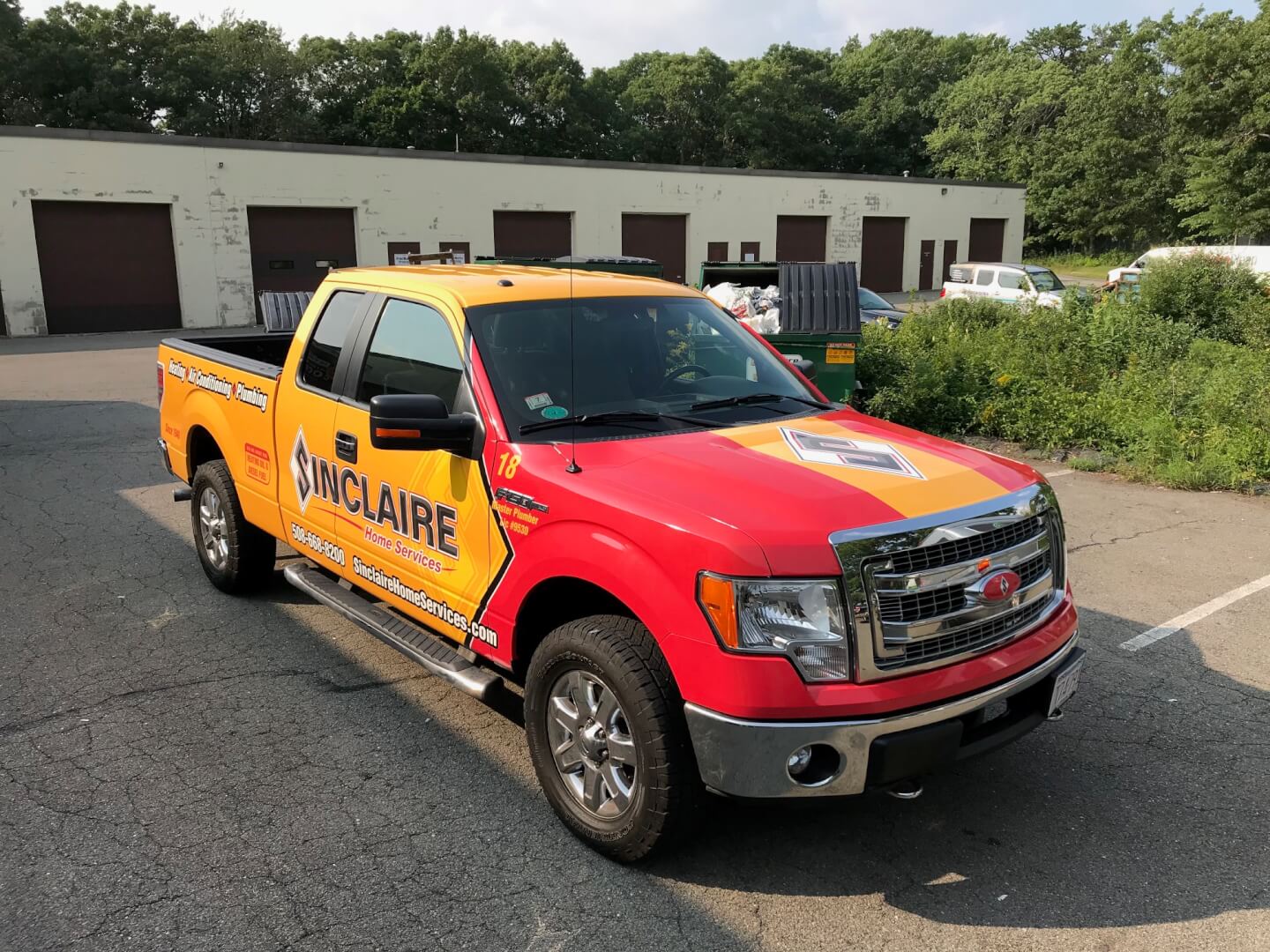What Happens When Your Thermostat Stops Working?
BLOG CATEGORIES
140 South St., Walpole, MA 02081
P (508) 668-8200 Toll Free (877) 668-8822
info@sinclaireboston.com
Master Plumber License #9530,
Sheet Metal Master-Unrestricted #5442
Sinclaire Enterprises, Inc.
140 South St., Walpole, MA 02081
P 508.668.8200 Toll Free 877.668.8822 info@sinclaireboston.com
Master Plumber License #9530,
Sheet Metal Master-Unrestricted #5442
need service?
let us contact you
The chill of winter air is here and the days are getting shorter. Though it may not officially be winter yet, temperatures in Massachusetts have already started to drop significantly. With this colder weather, now is not the time to find out that your thermostat isn’t working properly. Don’t wait until it’s too late; make sure your thermostat is up and running now to avoid any surprises later!
The thermostat is the critical central component of a home’s HVAC system, responsible for controlling the temperature and ensuring that all parts of the house are kept comfortable. It reads and monitors the internal environment of the home, sending signals to activate various systems like boilers, furnaces, air conditioners, and more in order to adjust the temperatures to your ideal comfort.
Even when all other components of your HVAC system are in good working order, if the thermostat is faulty, effects can be unpleasant throughout the home. It’s, therefore, important to know what the signs of a faulty thermostat are, what the causes are, and what steps you can take to remedy the problem.

Signs Your Thermostat Is Faulty
Signs of a faulty thermostat go beyond the obvious: the thermostat won’t turn on or off. Here are some others:
- The display is unlit or unresponsive.
- The heater or AC is constantly running, and you can’t turn it off.
- Room temperature and the setting on the thermostat: If your thermostat is set to a certain temperature, but the room temperature is noticeably warmer or colder, the thermostat could be the problem. This is especially the case if you’re experiencing this in multiple rooms or throughout the entire home, whereas it might be something else if the issue only occurs in one room or area. Before you conclude that the thermostat is the culprit, ensure your home’s temperature settings aren’t zoned. If they are, fluctuations between rooms are to be expected.
Reasons Your Thermostat Isn’t Working and What You Can Do
Once you’re pretty sure your thermostat isn’t working correctly or at all, you should try to determine what’s causing the problem; when you know that, you can decide what to do. Sometimes the remedy is something quick and easy, and at other times you’ll need the services of a professional HVAC technician.
- The Power Source Might be Failing. If the screen is dark, that’s a glaring sign that power probably isn’t reaching the unit. Is the power switch fully engaged? That should be the first thing you check, and that’s a simple fix as well. Next, if that isn’t the issue, take the cover off and replace the battery. This, too, is a fast, simple fix. Still not working? Check to see if there’s a blown fuse or if a circuit breaker has tripped. The former might require an inconvenient trip out to a store to buy a replacement fuse, but both situations are still easy to remedy and probably won’t require professional servicing.
- Connections Could be Loose. Loose wires and corrosion can hinder a thermostat’s ability to communicate with the rest of the HVAC system. Quite often, you can fix these issues on your own. Before you start, protect yourself from electric shock by shutting off the power to the thermostat. All you have to do is switch the circuit breaker off. Then you can tighten the terminals with a screwdriver, pull wires out to inspect them for corrosion, and use a wire stripper to remove corroded sections before reattaching those wires. If these steps don’t work, you may manually test the connections. If you don’t know how to do that, aren’t comfortable working with electrical connections on your own, or don’t have the tools, don’t hesitate to call a professional. Don’t put yourself at risk or take chances with making the problem worse.
- Is the Thermostat Dirty? Just like many other electrical appliances, thermostats can malfunction if they get too dirty. Electrical components can fail due to having accumulated too much dirt, dust, or other debris. Fortunately, you can take care of this problem pretty easily, too. As with checking connections, first cut off the power by flipping the circuit breaker. Once you’ve done so, you can remove the thermostat’s cover and clean the housing with a small brush or compressed air. After completion, replace the cover and then turn the power back on.
- Is the Thermostat Level? If your thermostat has a mercury bulb, the unit has to be mounted on the wall in a level position in order for it to operate. In that situation, you could experience a discrepancy between the thermostat’s setting and the actual room temperature. A visual inspection should be able to determine if the thermostat isn’t level. If it isn’t, turn off the power (the circuit breaker again), remove the unit from the wall, and then, using a level, remount the thermostat in the proper position.
- It Might Have Been Installed in the Wrong Spot. If the thermostat seems to be communicating properly– power is reaching it, no loose connections, not too dirty, level mounting– but it still doesn’t seem to be able to keep up with what you’re asking of it, there’s a chance it’s mounted in the wrong place. A thermostat located too close to registers, windows, or doors may get an inaccurate reading of the conditions inside the house, making it sense that temperatures are cooler or warmer than they really are. In that case, the thermostat may shut the system off prematurely, resulting in temperatures not being where you expect them to be. If this might be the case, remove the thermostat and remount it in a more centralized location.
- It Might Just be Time for a New Thermostat. Like any other mechanical or electrical component, a thermostat’s performance can deteriorate with age. If the thermostat is old, if it’s incompatible with the other components in the system, or if the above troubleshooting tips don’t work, it’s probably time to get a new thermostat.
Sinclaire: Reliable and Affordable
When it’s time for an HVAC repair or replacement, Sinclaire Home Services will get things back to normal for you and your family as soon as possible. We have licensed, professionally trained technicians who have the tools and the know-how for any job, and we’ve built a reputation for quality that goes back over 70 years now. Whether it’s emergency furnace repair in Milton, furnace replacement in Framingham, or any other HVAC service needed in the Boston area, you can count on Sinclaire for quality and comfort.
Stop shivering or sweating. Call Sinclaire Home Services today!
OUR SERVICE AREAS
- Ashland, Ma
- Attleboro, Ma
- Bellingham, Ma
- BLACKSTONE, MA
- BRIDGEWATER, MA
- Canton, Ma
- Dedham, Ma
- Dover, Ma
- EAST BRIDGEWATER, MA
- Easton, Ma
- Foxborough, Ma
- Framingham, Ma
- Franklin, Ma
- Holliston, Ma
- HOPEDALE, MA
- Hopkinton, Ma
- Mansfield, Ma
- Medfield, Ma
- Medway, Ma
- MENDON, MA
- MILFORD, MA
- MILLIS, MA
- MILLVILLE, MA
- MILTON, MA
- NATICK, MA
- NEEDHAM, MA
- NEWTON, MA
- NORFOLK, MA
- NORTH ATTLEBORO, MA
- NORTON, MA
- NORWOOD, MA
- PLAINVILLE, MA
- RANDOLPH, MA
- RAYNHAM, MA
- SHARON, MA
- SHERBORN, MA
- STOUGHTON, MA
- SUDBURY, MA
- TAUNTON, MA
- WALPOLE, MA
- WAYLAND, MA
- WELLESLEY, MA
- WEST BRIDGEWATER, MA
- WEST ROXBURY, MA
- WESTON, MA
- WESTWOOD, MA
- WRENTHAM, MA
AFFILIATIONS





